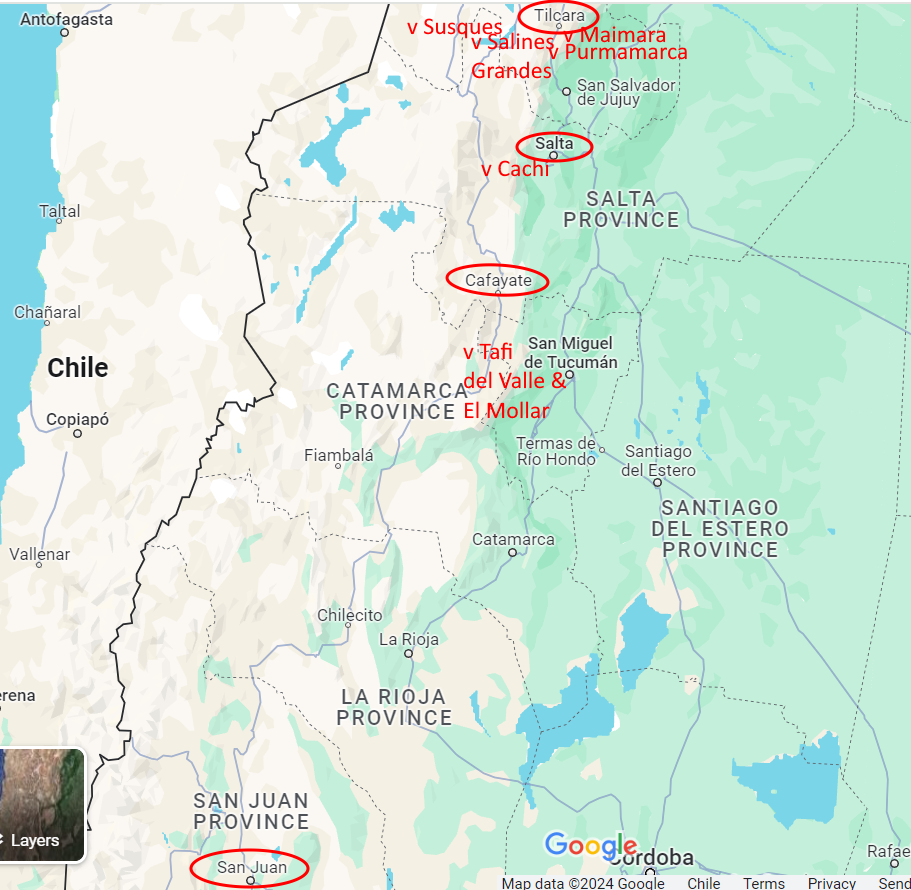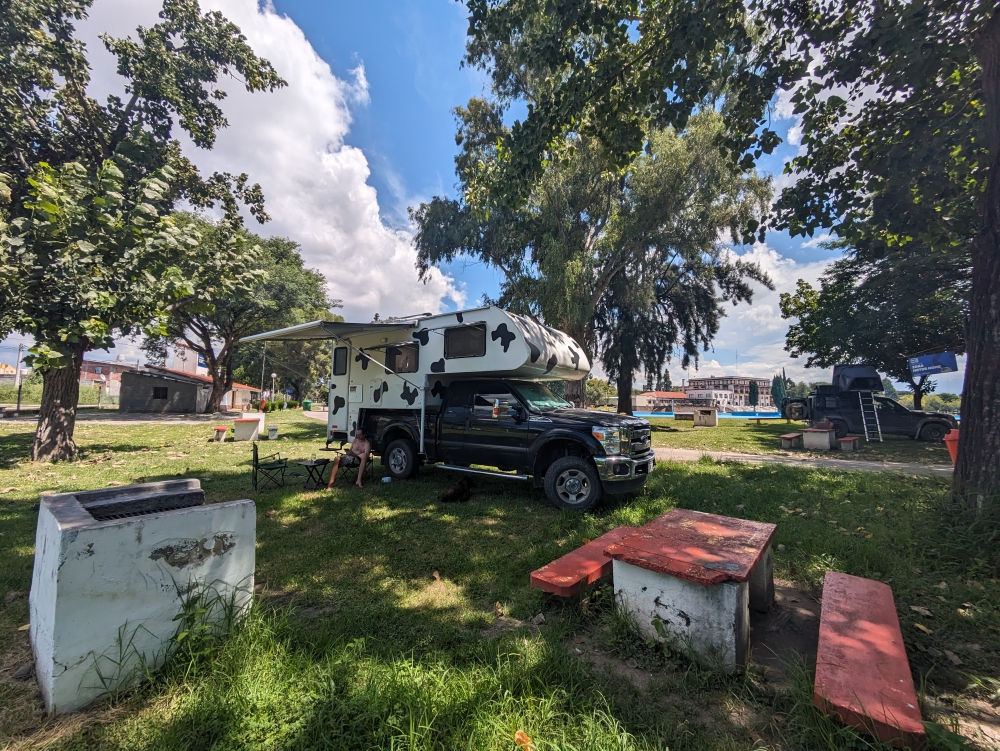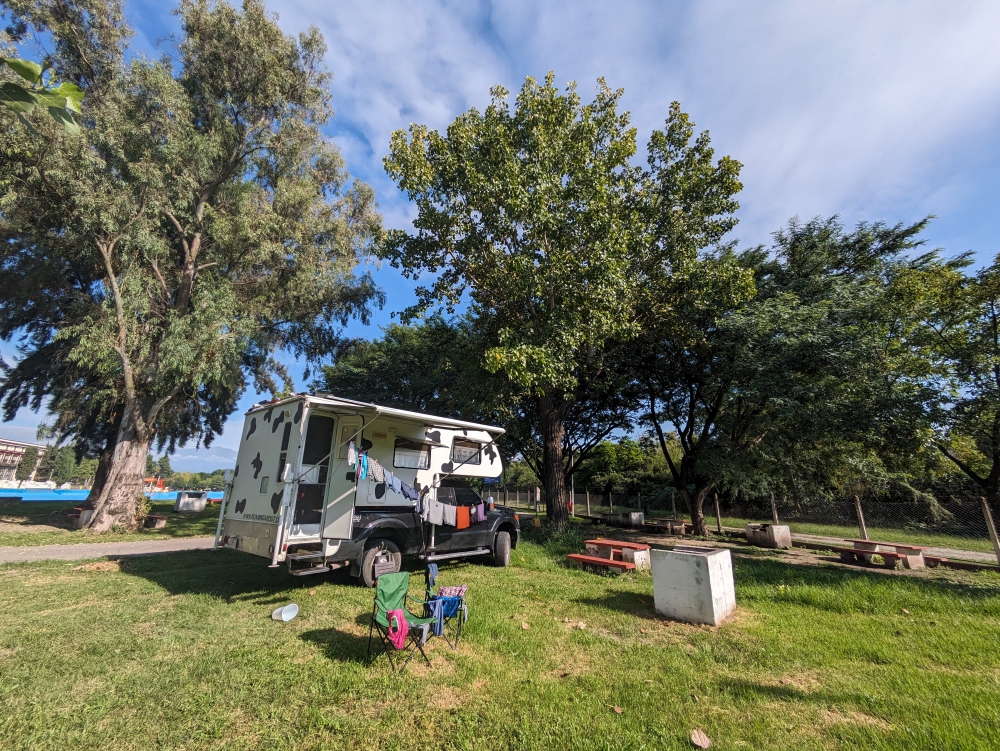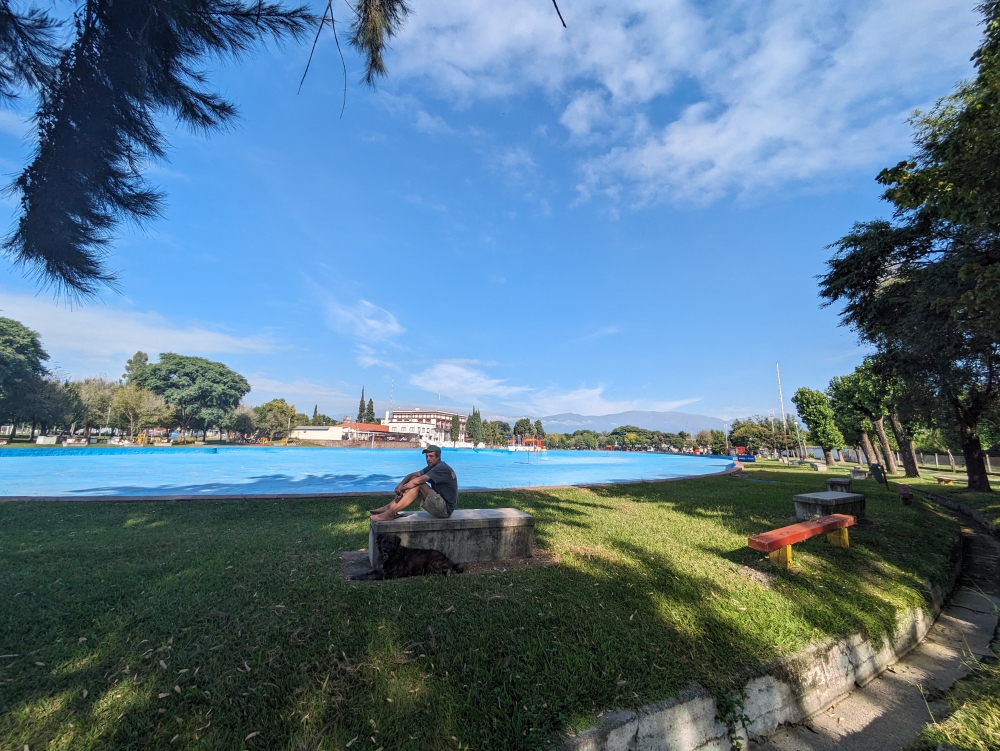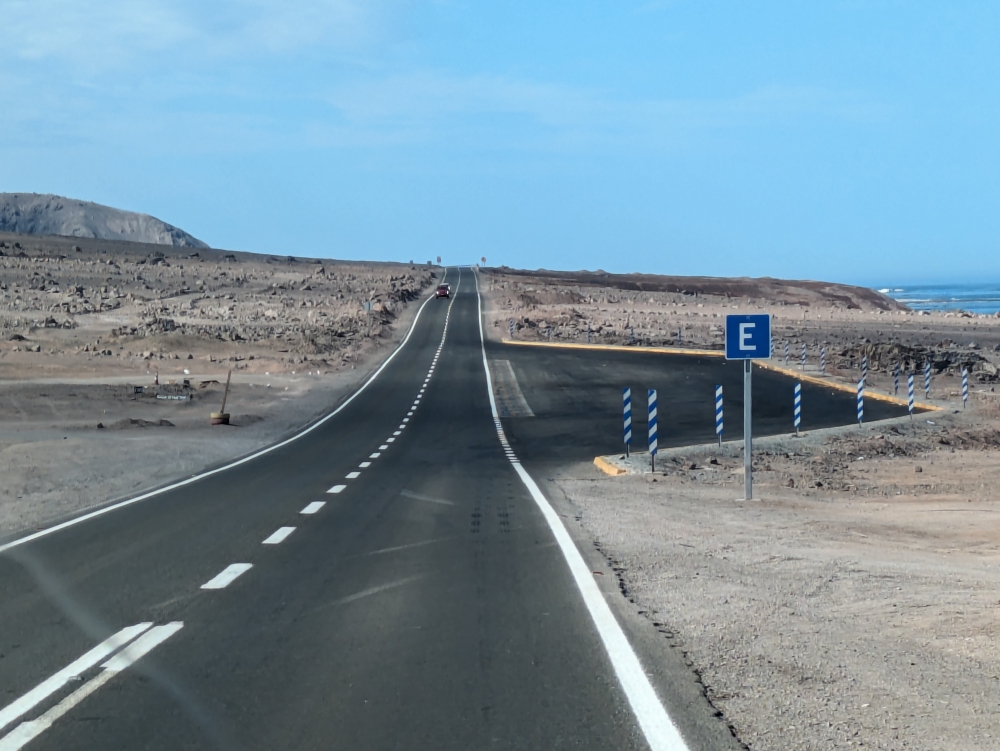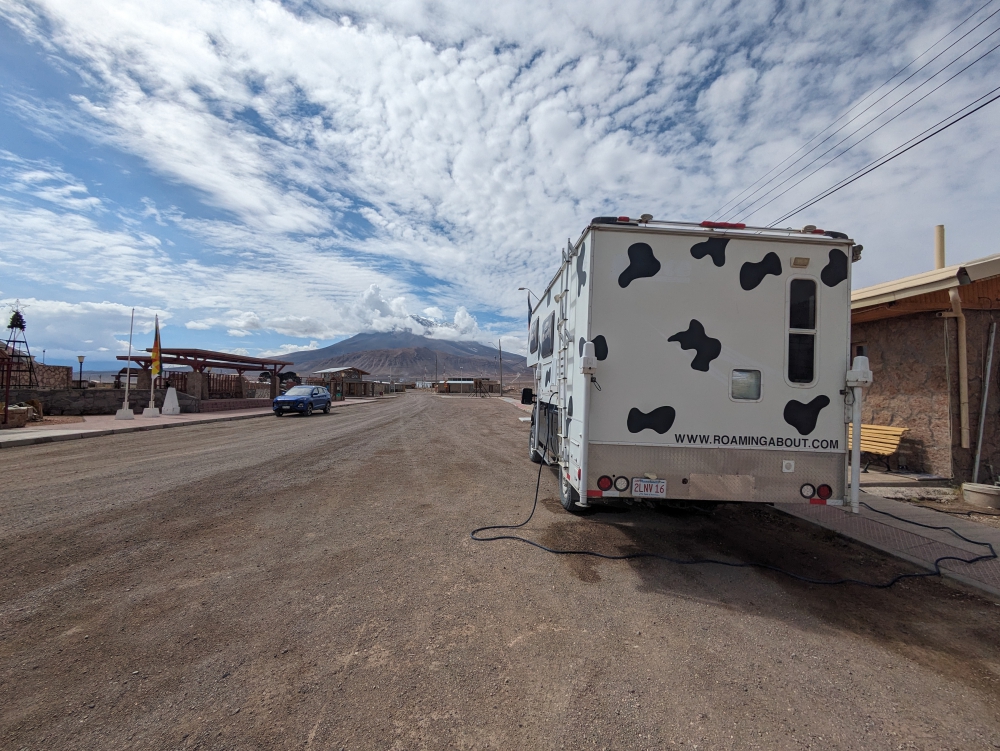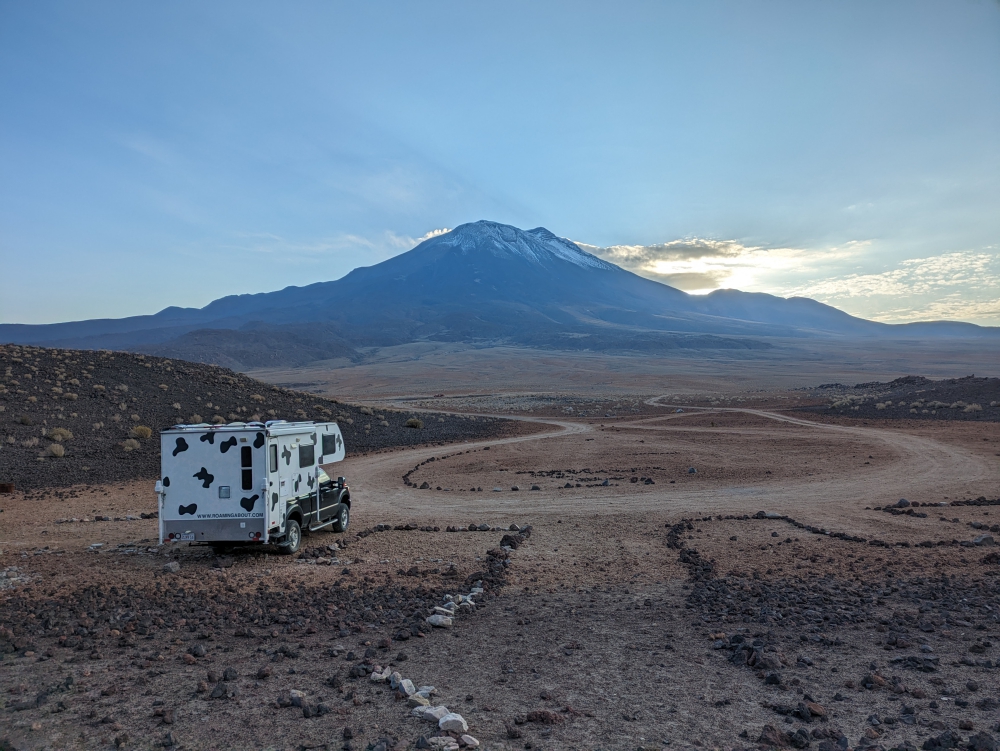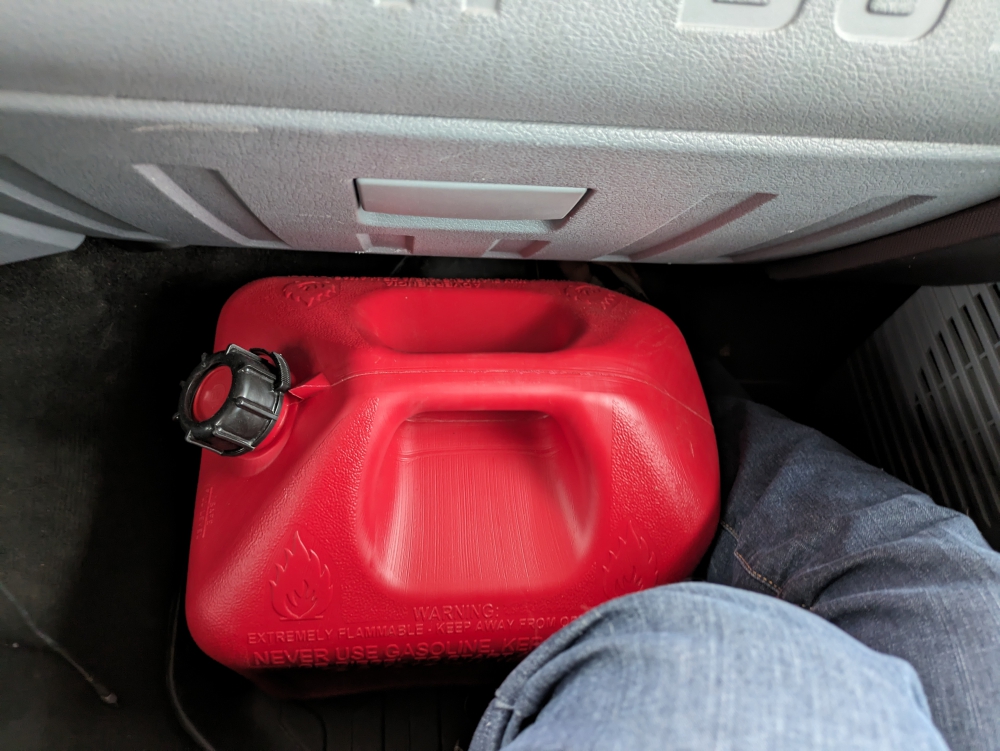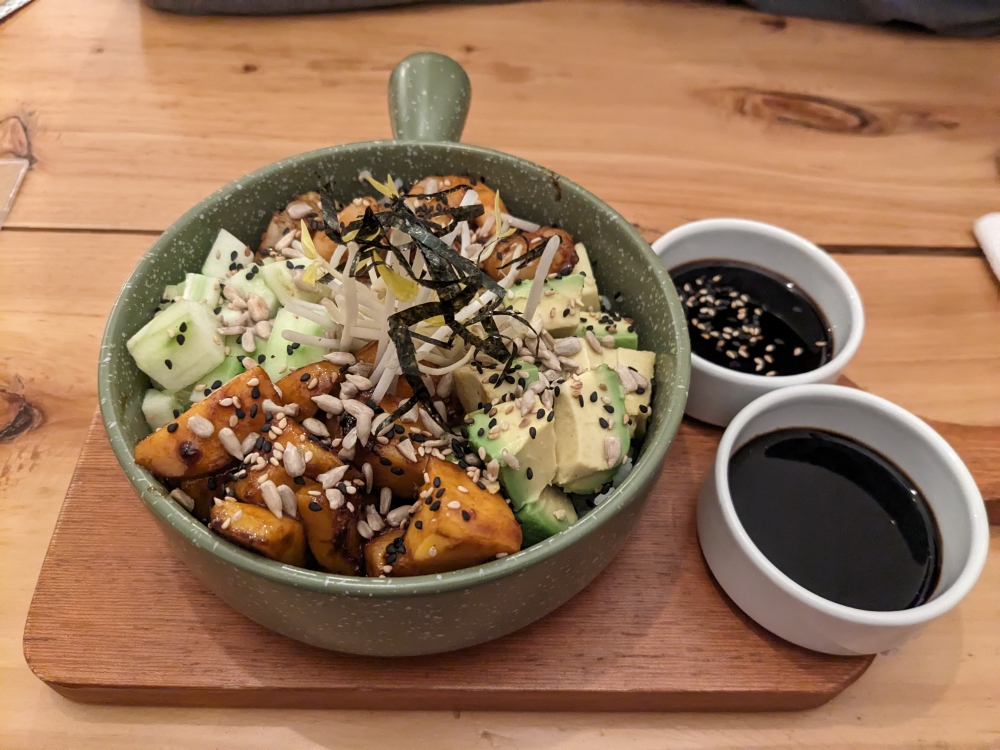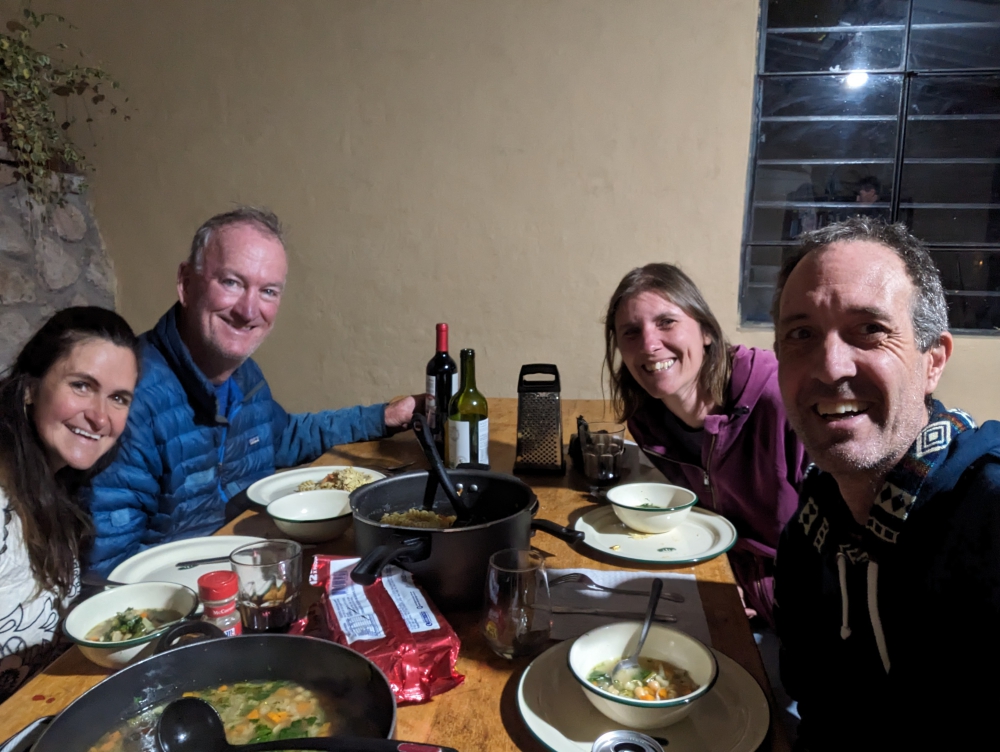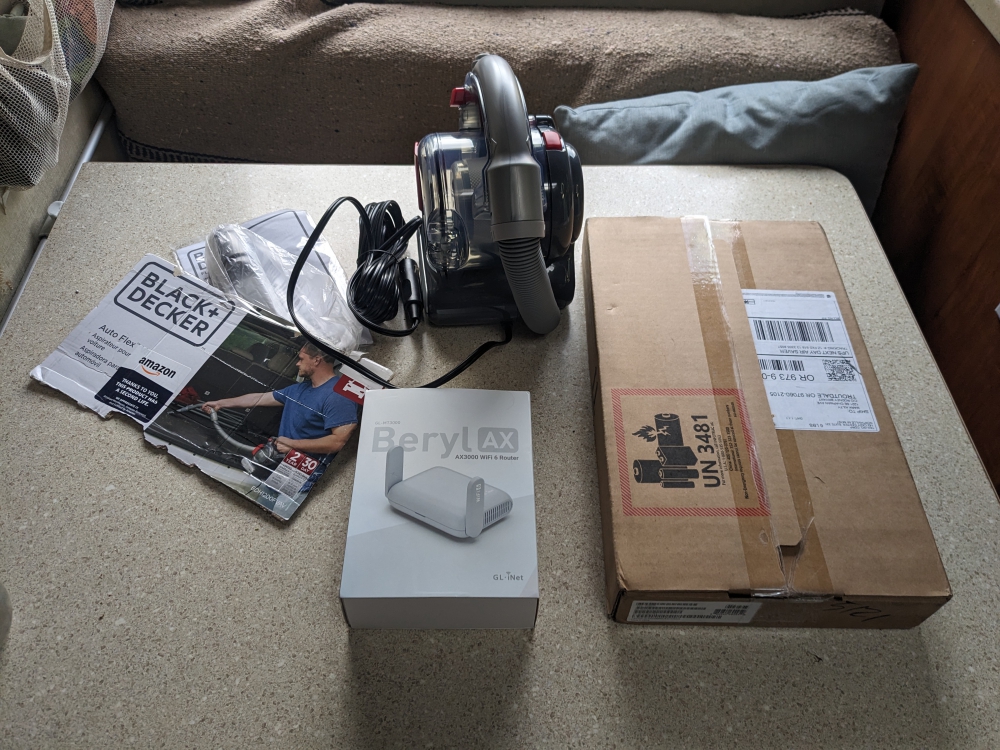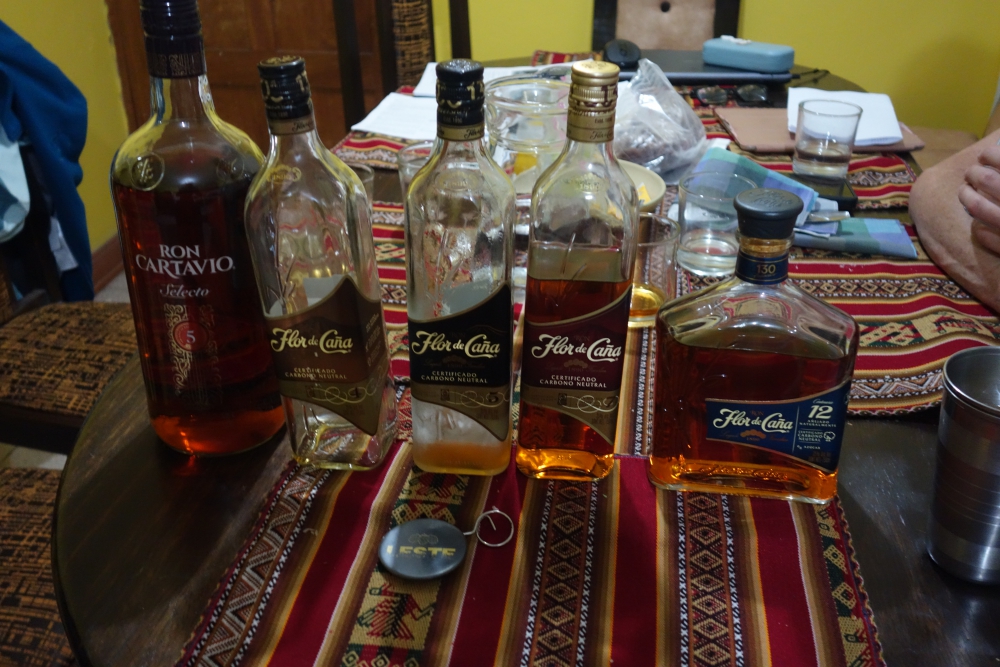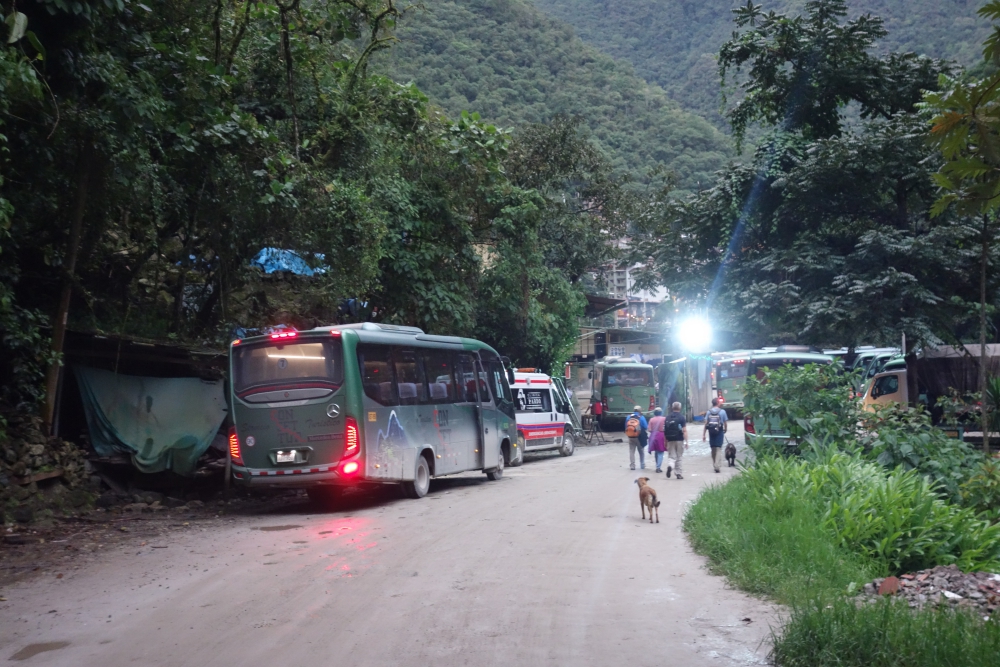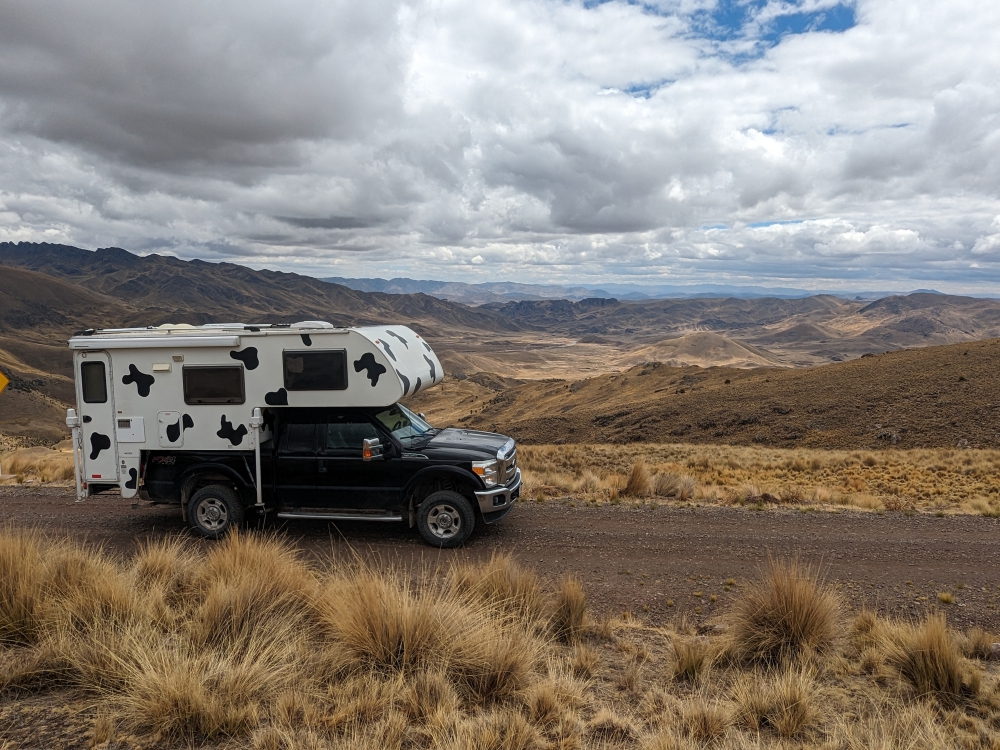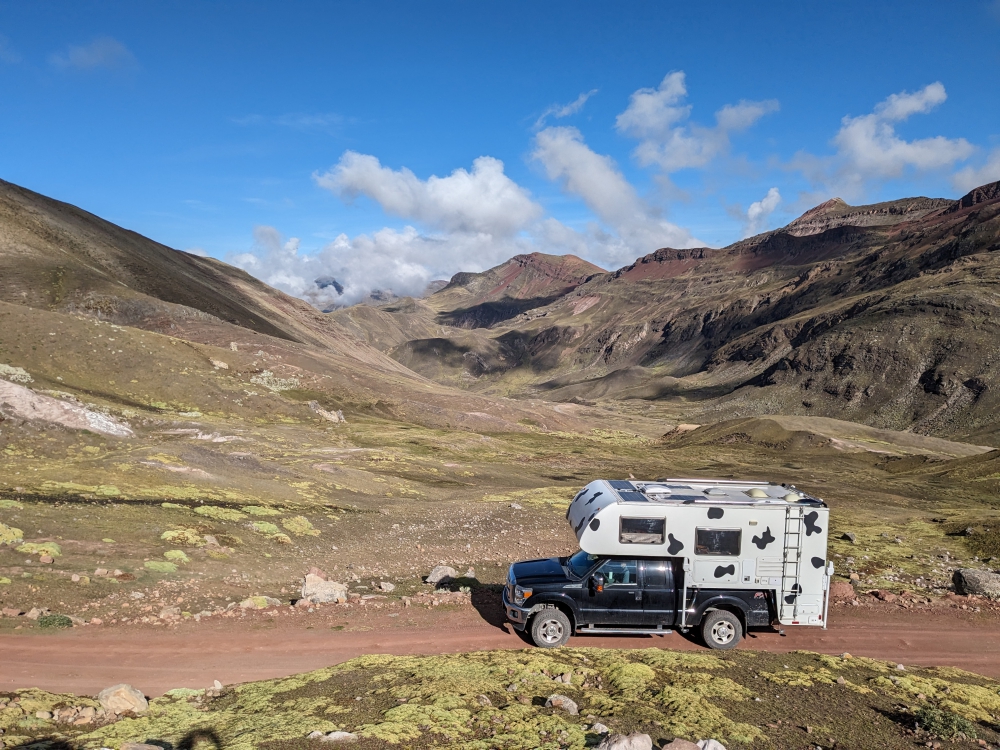
Every month, I post a report of our expenses to show that it is possible to live a comfortable, exciting, and adventurous life without breaking the bank. The less money you spend, the less you need to make. 🙂
This report includes ALL of our expenses, in US$, for two adults and one 60-pound dog (we adopted Maya on June 4th, 2019). Under groceries we incorporate food, produce, and non-alcoholic drinks predominantly bought in supermarkets. Toiletries belong in that category as well. Dining out means eating at a restaurant/event or purchasing take-out food. The health category covers non-prescription medicines and vitamins/supplements; medical contains prescription drugs and doctor’s visits. Because of our income level, Mark and I are eligible for free health care within the state of Massachusetts. For check-ups and extensive care, we return to the US East Coast. Other health issues are resolved locally and out of pocket where needed and possible.
For part of December 2023, Mark and I parked our truck camper, Thirsty Bella, at the Quinta Lala campground in Cusco, Peru, while we explored the city and surroundings with my cousin, Griet, and her husband, Wim. After they flew home to Belgium, we got ready for the road again, met up with good friends, and made our way to the Bolivian border, which we crossed on December 19th. After a few days in Copacabana, we reached La Paz, where we’ve been stationary since, to run the Las Lomas campground for a month.

Another goodbye to our friends Katherine and Brandon

Happy hour with Katherine and Brandon in our camper

Dinner in our camper with Sheri and Jeff

Welcome to Bolivia

Camped in busy and popular Las Lomas, La Paz
The car category was huge! Not only did we spend almost $300 on gasoline, we also had two costly “repairs,” and purchased liability insurance for six months in the Mercasur countries (Argentina, Brazil, Uruguay, and Paraguay with Bolivia and Chile being associated states).
In Cusco, we added “unbreakable” security film to the four side windows of our truck, after reading repeated reports of foreign cars being broken into in Chile.

Getting security film added to our car windows took around three hours.

Waiting for the work at the window tinting place to be done. It was a tight fit into their workshop!
Before leaving Peru, Mark noticed sparks in our engine, each time he started the car. Once in La Paz, he discovered corrosion in some of the ignition coils. He managed to clean and reinstall two of them, but one had to be replaced. Our options were to buy a low-quality coil locally for twice the price than a high-quality one in the US, or to pay heavy import duties when ordering what we wanted online. We decided to purchase one ignition coil in La Paz. At the moment, one more coil is broken, so we need another part… The good news is that we figured out the cause of the rust, yesterday.
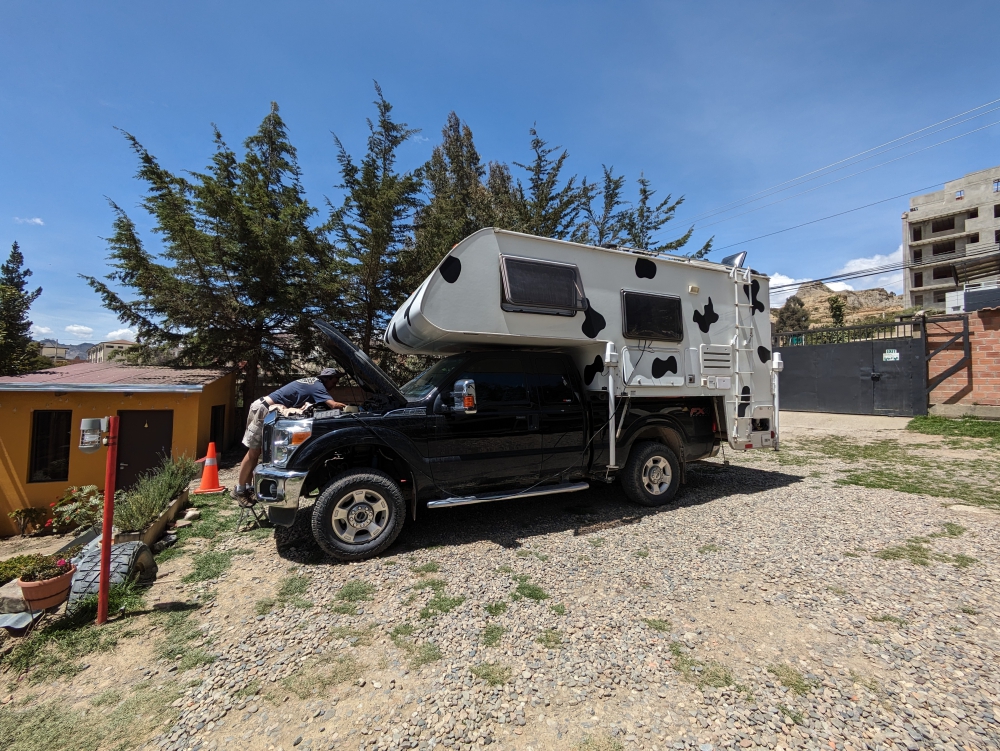
Mark works on the engine
We finally bought a tire plug kit, in case we run into a puncture problem again (like that terrible incident in Colombia). We also took Thirsty to a carwash before leaving Cusco, paid for parking when needing the car close to our Airbnb, and handed over cash at a few restored toll booths. We had gotten away with not paying tolls in Peru for months, after protesters burned most of the stations down in early 2023.
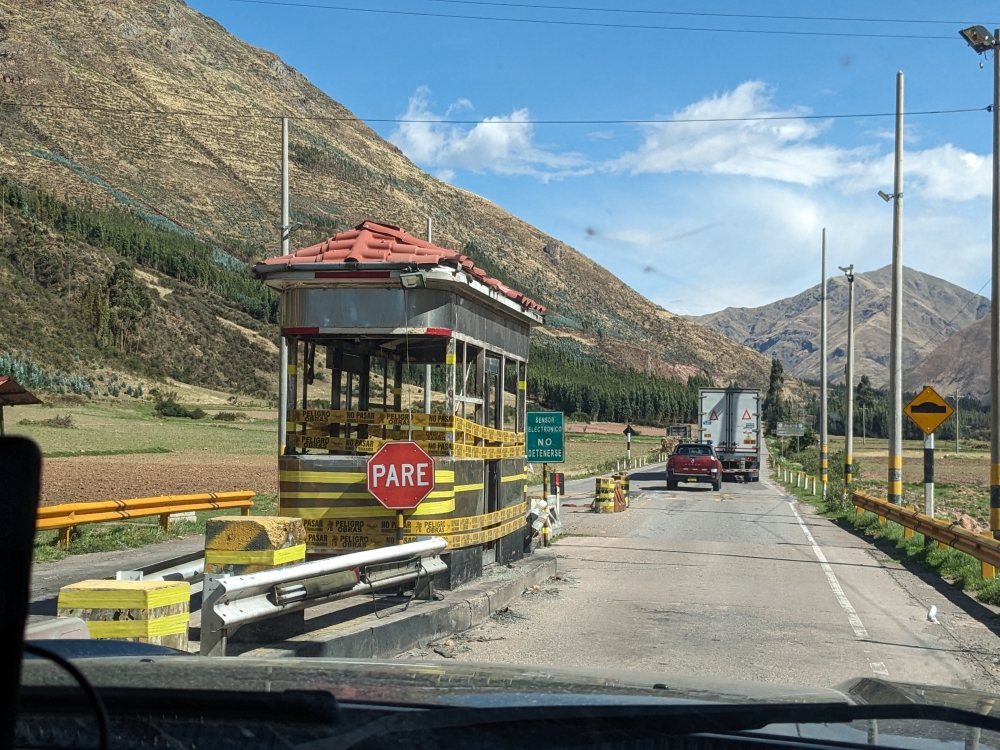
Burned-down toll booth
Our grocery bill was above average, because we went on a couple of extensive shopping sprees, after finishing all the food from the fridge and making a dent in other provisions, before we stored our camper for three weeks. And, there were lots of homecooked dinners, among which two special ones over the holidays.

We did not buy any of these animal parts at the San Pedro Market in Cusco

Buying a big bread in the “bread capital of Peru” – it was too sweet for me

Buying more Parmesan at the cheese farm in Tinajani Canyon

Potluck dinner on New Year’s Eve

Meat was popular on New Year’s Eve!

Campfire on New Year’s Eve
We ate out quite a bit, having friends and family – and incredible restaurants – around, including a fabulous birthday dinner. Despite Griet and Wim’s generosity, we still spent more than usually in this category.

Fabulous – and fancy – birthday dinner at KusyKay in Cusco, ranked the #1 restaurant on Tripadvisor with a 5-star rating!

A nice and special touch

Taking Griet and Wim to our favorite vegetarian restaurant in Cusco, El Encuentro

Taking Katherine and Brandon to our favorite vegetarian restaurant in Cusco, El Encuentro

Mark’s fancy meal at Ofrenda: ossobuco

My fancy meal at Ofrenda: stuffed pepper

Dinner outside at La Cupula (Maya was not welcome inside the restaurant) in Copacabana

Dinner at a Greek restaurant in Copacabana – Mark’s meal of goulash

Dinner at a Greek restaurant in Copacabana – My meal of vegetarian lasagna
The next big and unexpected expense was a new smartphone for me. The day after my family arrived, we were strolling through downtown Cusco, ready to join a walking tour. Griet and I were chatting non-stop. In the excitement of the day and the company, I had forgotten to zip up the pocket of my sweater, which was wrapped around my waist. My phone was located in this pocket and skillfully removed from it by someone, without me noticing it.
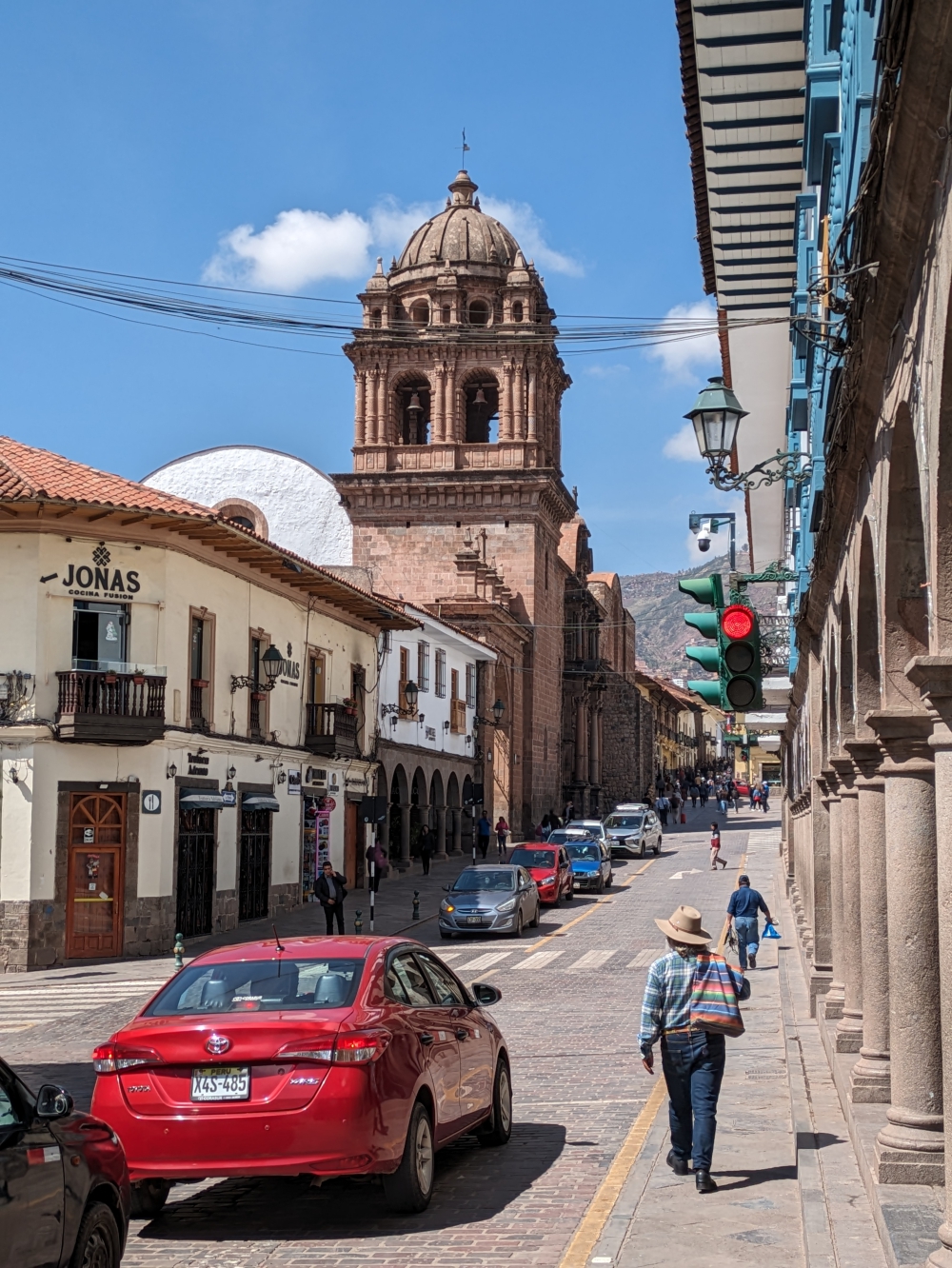
My phone was stolen in this area, on a pedestrian stretch further down.
I couldn’t help but feel this robbery was my fault, despite being the victim and stealing being a crime. Of course, I should have zippered up! Instead of joining the Cusco Free Walking Tour, Mark, Maya, and I spent that afternoon at the main police office (a story for another day). Needless to say, I never retrieved my one-year-old Google Pixel 6a, of which I’d finally had the cracked screen replaced a month and a half prior. I was beyond bummed.
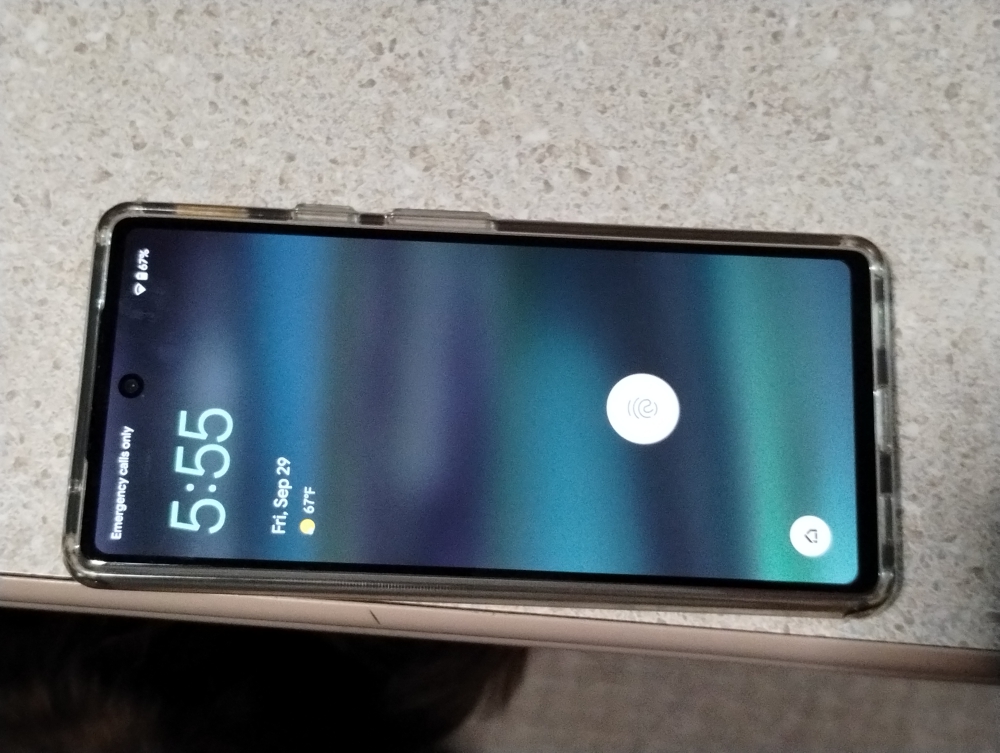
After one year, my badly cracked screen was replaced!
But, as “luck” would have it, my birthday was coming up and our Canadian friends, Sheri and Jeff, had another week at home, before meeting us in Peru. They joined forces with Mark and managed to find and bring me a new smartphone: A Pixel 7a. Mark surprised me with it, one day on a hike. Interestingly, while I’m super happy to have a good camera again, being without a phone for a month was somewhat liberating; I enjoyed taking less photos and not “having” to post them on Facebook; my main use for this device.

My new Google Pixel 7a smartphone
Our accommodation costs for last month included splitting an Airbnb in Cusco for a week with my cousin and her husband, storage for Thirsty Bella during that time, another few days of camping at Quinta Lala, and tipping a farmer in Tinajani Canyon to boondock on his land for three nights.

A repeat visit to Tinajani Canyon for a few quiet nights

Camped with Jeff and Sheri in Tinajani Canyon (Photo credit Sheri Ouellet)
December is the period of gifts. I created annual calendars with 13 photos of the two – or three – of us in exciting locations for family members in Belgium and the US, we bought a bottle of Baileys for Sheri and Jeff, whom we celebrated Christmas with for the second year in a row (on a funny side note, they happened to select the same bottle for me as a gift), and we ordered an electric heater for my mother-in-law as an early birthday present.

Jeff and Sheri got us stockings for Christmas!!

Sheri and I bought each other the same gift: a bottle of Baileys
Our alcohol expense seemed average – surprising, when celebrating the old and the new year with friends – but I have to add a note about the utilities category. We actually pay around $70 a month for our Starlink satellite internet subscription, but Mark realized that some of that fee should be put towards our business/freelance careers, hence the reduced amount of $35 for unlimited internet in this report and going forward. We also filled our propane tank, before leaving Cusco. This should last us three months.

Getting our propane tank filled at this place, before leaving Cusco – and Peru

Road closures in Cusco

One more drive in Cusco, dealing with lots of traffic and aggressive drivers
We paid for a rickety barge crossing of Lake Titicaca in Bolivia and frequently used taxis to get around in Cusco and La Paz. Plus, we enjoy(ed) taking the cable cars in La Paz. In cities, it is just safer – and less frustrating – to keep the vehicle parked at a secure location and get around with public transportation.

Taking the rickety barge across Lake Titicaca with Thirsty Bella

Barges are the only transportation across this channel

Crossing the isthmus of Lake Titicaca

The Blue cable cars in La Paz

Taking the cable car over La Paz

The Yellow Line above La Paz
The only real excursion we did in December was a strenuous hike on Isla del Sol in Lake Titicaca, leaving from Copacabana.

Some of the bays in Isla del Sol reminded me of the Mediterranean Sea.

Hiking on Isla del Sol with Sheri and Jeff

Leaving Isla del Sol from its biggest village, Yumani

The rim trail on the island went up and down for many miles.
I explored a few more ruins with my family around Cusco, but those were included in my 10-day tourist ticket, bought in November.

The archeological site of Tipon

The archeological site of Pikallaqta

My ten-day tourist ticket
Our friend, Jeff, and I also bicycled Death Road (aka “The World’s Most Dangerous Road”) on a long and exhausting, but fun, day trip from La Paz. I used gift money from my parents for that adventure. More about that in another post.

Our awesome biking group for Death Road

I’m ready for the most spectacular bike ride in the world – and the most dangerous one

Biking downhill on Death Road
The remaining categories were all under $20. We went out for a few drinks with friends, obtained meds from the pharmacy for my headaches, sore throat, and birth control, sourced a few items for the camper, bought two new camping chairs that were super affordable (the only negative, we discovered later, is that none of our glasses or stainless-steel water bottles fit in the cup holders), found a muzzle for Maya so she could join us in the cable cars of La Paz, and exchanged coins for toilet visits.

Buying two tasty and cheap fruit juices at a market, while waiting for the “window tinting”

A toast for my birthday with Griet

Our new camping chairs at Lake Titicaca

Maya is allowed on the cable car system, but only when wearing a muzzle
Crossing the border into Bolivia didn’t cost anything and once there (and at a beach south of Puno earlier), we wild camped for free again.

Camped with Sheri and Jeff at the beach of Moyapampa, Peru, along Lake Titicaca

Home in Copacabana, Bolivia, for a few days

Free camping on the edge of La Paz on Christmas Eve, before heading to the Las Lomas campground the next day
Our total for December was high again, around $1,900, but we are determined to begin 2024 on a lower budget. For once, we are off to a good start.
